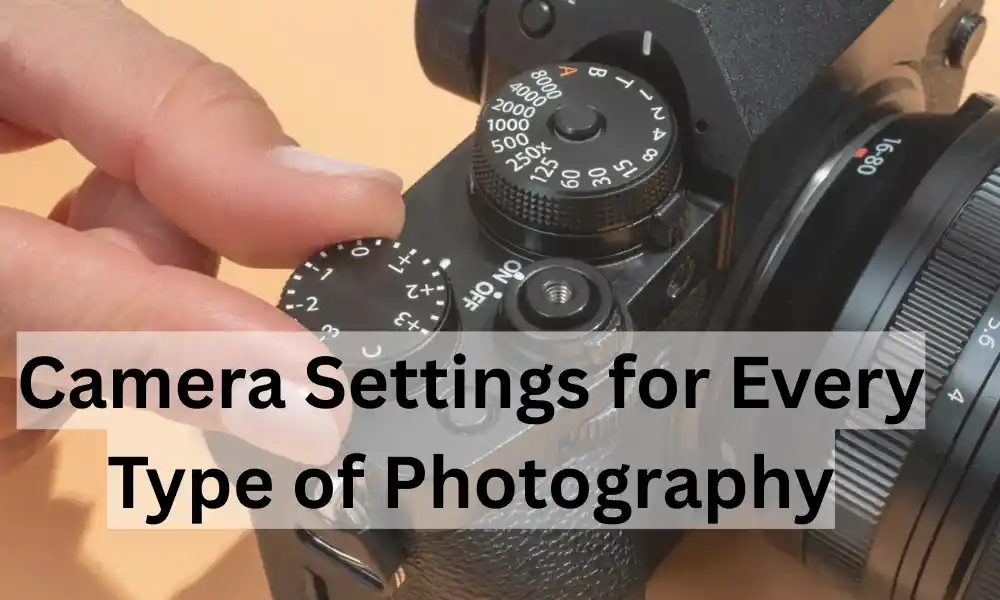Photography is more than just pressing a button it’s about understanding light, composition, and how your camera settings shape the final image. Whether you’re shooting portraits, landscapes, sports, or night skies, your camera is a tool, and learning how to use it effectively will transform your photos from ordinary to extraordinary.
This guide will break down the essential camera settings aperture, shutter speed, and ISO—and then show you how to tailor them for different photography styles. From beginners who rely on auto mode to advanced photographers perfecting manual mode, you’ll find practical tips here that make capturing stunning photos simple and approachable.
What Are Camera Settings?
Think of camera settings as the recipe for your image. Just like cooking requires balancing ingredients, photography requires balancing aperture, shutter speed, and ISO often referred to as the exposure triangle.
- Aperture – Controls how wide the lens opens, affecting depth of field and brightness.
- Shutter Speed – Determines how long light enters the camera, affecting motion blur or sharpness.
- ISO – Adjusts the camera’s sensitivity to light, balancing exposure but also introducing noise.
Camera Modes Explained
Modern cameras (DSLRs, mirrorless, and even smartphones) provide different modes for convenience and flexibility. Here’s a breakdown:
1. Fully Auto
Perfect for beginners. The camera decides everything—aperture, shutter speed, and ISO. Quick and easy, but limits creative control.
2. Semi-Auto Modes
These modes strike a balance between creativity and automation:
- Aperture Priority (A/Av): You choose aperture, camera adjusts shutter speed. Ideal for portraits and bokeh shots.
- Shutter Priority (S/Tv): You choose shutter speed, camera adjusts aperture. Perfect for sports and action.
- Program Mode (P): Camera picks aperture and shutter speed, but you can tweak ISO, exposure compensation, and white balance.
3. Manual Mode
Full creative control. You set aperture, shutter speed, and ISO. It takes practice but gives the freedom to create exactly the photo you envision.
Essential Camera Settings for All Photography
Before diving into styles, let’s break down the core elements:
Shutter Speed
- Fast shutter speeds (1/500s – 1/2000s): Freeze motion, great for sports, wildlife, and street photography.
- Slow shutter speeds (1/30s – 30s): Capture motion blur or long exposures, such as waterfalls, light trails, or astrophotography.
Aperture
- Wide aperture (f/1.4 – f/2.8): Blurred background, ideal for portraits.
- Narrow aperture (f/8 – f/16): Keeps everything in focus, perfect for landscapes.
ISO
- Low ISO (100–400): Clean, sharp images with minimal noise.
- High ISO (800–3200+): Useful in low-light, but introduces grain.
Camera Settings for Different Photography Styles
Every genre of photography demands different settings. Here’s a quick reference guide:
1. Portrait Photography
- Aperture: Wide (f/1.4 – f/2.8) for background blur.
- Shutter Speed: 1/125s or faster to freeze motion.
- ISO: 100–400 for clarity.
2. Landscape Photography
- Aperture: Narrow (f/8 – f/16) for maximum depth of field.
- Shutter Speed: Longer exposures work well with tripods.
- ISO: Keep at ISO 100 for sharpness.
3. Action & Sports Photography
- Aperture: Moderate (f/4 – f/5.6).
- Shutter Speed: Fast (1/500s – 1/2000s) to freeze movement.
- ISO: 400–1600 depending on lighting.
4. Night Photography
- Aperture: Wide (f/2.8 or lower).
- Shutter Speed: Long (15–30s) for stars or city lights.
- ISO: 100–800 to avoid excess noise.
5. Macro Photography
- Aperture: Narrow (f/16 – f/22) for sharp focus on small subjects.
- Shutter Speed: 1/200s – 1/500s to prevent shake.
- ISO: 400–800 for balanced exposure.
6. Street Photography
- Aperture: f/5.6 – f/8 for flexibility.
- Shutter Speed: 1/250s – 1/500s for spontaneous action.
- ISO: 400–800 for low-light adaptability.
Pro Tips for Better Results
- Shoot in RAW for maximum editing flexibility.
- Use exposure compensation (+/-) to adjust brightness quickly.
- Rely on histograms instead of just the LCD preview.
- Practice often—adjusting settings will become second nature.
Final Thoughts
Camera settings aren’t about memorization—they’re about understanding balance. Each adjustment affects the others, and the more you experiment, the more intuitive it becomes. Whether you’re chasing golden-hour portraits, crisp sports shots, or dreamy long exposures, the right settings unlock your creative vision.
Photography is your art form—your camera is simply the brush. Master the settings, and your photos will tell the stories you want them to.



